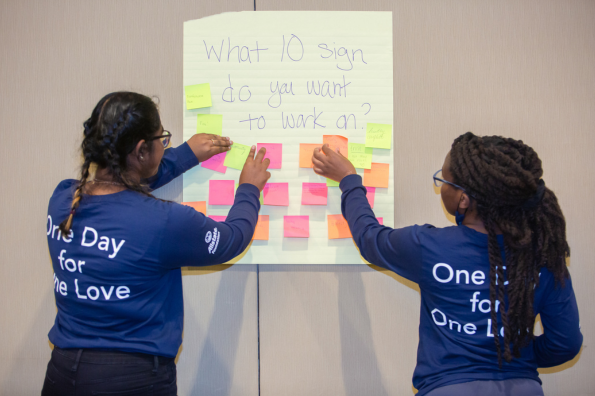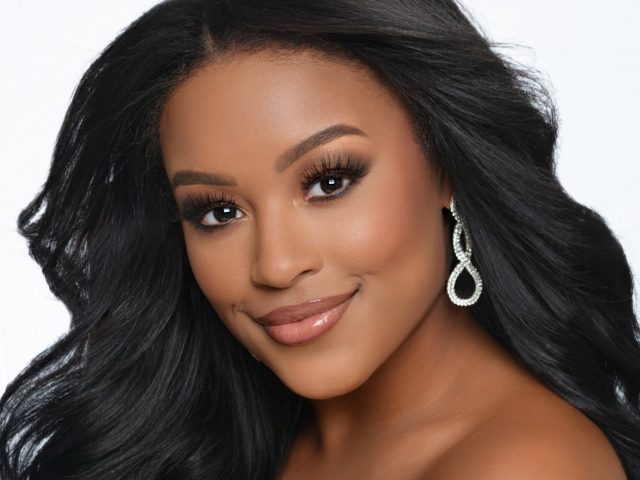In recent years, designers like Thom Browne and Vivienne Westwood have premiered gender fluid designs that push the envelope and reflect our evolving ideas about gender and self-identity. Much like the styles we see on the runway, gender norms have undergone a major shift in the last decade. Celebs like Jaden Smith and Miley Cyrus have ditched conventional style and embraced gender fluid clothing that allows them to express themselves just as they are.
Seeing celebs embrace gender fluid style choices suggests that society has progressed past outdated gender stereotypes. Or, has it? While it’s just as normal for women to bring home the bacon, as it is for men to take on domestic tasks such as child rearing, cooking, and cleaning, in many ways, harmful gender norms persist and influence our relationships.
Not only do gender norms push outdated dating rules that are almost only applied to heterosexual relationships but they perpetuate gender-specific behaviors that do more harm than good to people of all genders.
Have you had enough of problematic gender norms? Us too. Below, we’ve highlighted 4 common gender norms that perpetuate unhealthy behaviors for both women and men.

Real Men Don’t Cry
Expectation:
Men grow up with the belief that crying is a sign of weakness.
While adults will often say soothing things to a crying child to get them to calm down, boys are more likely to be told by parents, teachers and their peers that they shouldn’t cry and that they should suck it up instead. This leads boys to bottle up their emotions and keeps them from overcoming them effectively. And since it’s perfectly acceptable for girls to cry, many men associate crying with femininity and weakness.
Reality:
The bottom line is crying is a normal human emotion that doesn’t need to be associated with a weakness for any gender or gender non-conforming person. As Jack Fisch points out in his article “7 Positive Phrases We Should Be Teaching America’s Boys About Masculinity, “Despite this cultural stereotype, science shows that crying helps regulate emotional stress and is widely considered a healthy outlet.”
Real Men Are the Breadwinner
Expectation:
Though two-income households are normal, unfortunately, the expectation that men should make more money than their partner still exists. This expectation leads many men to feel resentful of their partner if they earn more than they do. For example, Alan, a successful accountant at a small firm was embarrassed by his high earning wife. He told LearnVest,“There was just something about it that made me feel inadequate. I knew it was illogical.” His insecurity led him to act out his frustration in unhealthy ways. When asked by a family member why he and his wife had opted not to have children he replied that she was too busy wearing the pants to be a mom.
Reality:
Attaching a man’s worth to his paycheck is not only outdated but completely unfair. A study from the Pew Research Center found a striking 40% of American families’ primary breadwinners are mothers, and 37% of those breadwinners–an estimated 5.1 million–are wives who make more than their husbands. Since our labor market has changed as more women have entered the workforce, “we may need to tweak our family model to mirror those realities,” says Rachel Lu in her article Why It’s Wrong to Equate A Man’s Worth With His Career.“
Women Are Quiet and Passive
Expectation:
I think we can all agree that girls and boys should be raised to be smart, strong, and confident individuals. However, I’ve noticed my female cousins and nieces, in particular, have changed from vibrant, talkative kids to quiet and timid adolescents. Some child psychologists claim that girls become less vocal as they grow up for various reasons including low self-esteem. Kristin Mmari, an associate professor at Johns Hopkins Bloomberg School of Public Health told USA Today “There seems to be a shift as soon as girls and boys enter [adolescence], where their attitudes and beliefs about the opposite sex change dramatically.” Once girls become teens they are seen as vulnerable and in need of protection leading many teens (and later women) to hide their assertiveness in order conform to society’s beliefs.
Reality
Gender norms that say women should be polite and quiet lead many women to suppress their feelings in their relationships. It’s also apart of the reason why women survivors of sexual assault or sexual harassment don’t speak out about their experiences until later in life. However, there are things parents can do to encourage their child to challenge these stereotypes such as encouraging free thought and independence as well as having discussions about stereotypes perpetuated by the media.
Women Should Look Flawless
Expectation
Just like men are expected to have a fit, muscular body, women face immense pressure from society to look pretty almost 24/7. Women are inundated with advertisements about beauty products, usually promoted by gorgeous models through television and magazines. These images are internalized and send the message to women that their worth is tied to their appearance.
Reality
The pressure to look flawless affects women from all walks of life. According to the Daily Mail, a survey revealed that 58% of women said they look better with their makeup, and 12% said they wouldn’t be desired as much without it. Women shouldn’t have to feel like they need to look perfect all the time, especially for their partners.

Gender Stereotypes and the Media
Movies, television shows, music, and even pop culture are tremendous influences when it comes to gendered expectations of masculinity and femininity.
In the film 50 Shades of Grey, the female protagonist Anastasia Steele is portrayed as a quiet, reserved college student who becomes the love interest of Christian Grey, a powerful businessman. Both characters display tired gender norms that could potentially be harmful to men and women. For example, Christian Grey is portrayed as the ideal man, he’s rich, stoic but handsome, and fit. And Ana is a young, beautiful and timid woman who is willing to do anything to please him sexually. Though it’s only a movie, the relationship dynamics of Christian and Ana are problematic. Since Christian holds most of the power in their relationship it leads him to do some really unhealthy things such as stalking Ana at work and showing up to apartment unannounced. As for Ana, her codependency and need for approval from Christian is portrayed as romantic and endearing.
We should be critical of the way we are taught to expect men and women to behave based on their gender. We live in a more progressive time compared to the past when it comes to some issues regarding gender, but we need to remember that gendered expectations are still ingrained into our culture and it is so subtle that we hardly even notice. There are some really simple ways we can help stop its influence such as creating safe spaces for men to express the full range of their emotions and letting women know that their voices matter. No matter what gender someone self-identify’s as there’s no difference in our ability to make a change.
Browse by Category

3.2 Million Strong: How One Love is Saving Lives Through Education
Please share this blog with your network across social media, or email it to someone to show your continued support.…
Finding Strength in Our Stories: Domestic Violence Awareness Month
⚠️ Trigger Warning: This blog includes content and language related…
Understanding Domestic Violence Awareness Month (DVAM)
October is almost here, and that means it’s time to…
4 Students Share How They Helped a Friend in an Unhealthy Relationship
Watching a friend struggle in an unhealthy or abusive relationship…
Courageous Boundaries: Managing Life with Your Ex Partner by One Love Foundation and Miss Kansas, Alexis Smith
Co-authored by One Love Foundation and Miss Kansas, Alexis Smith …















